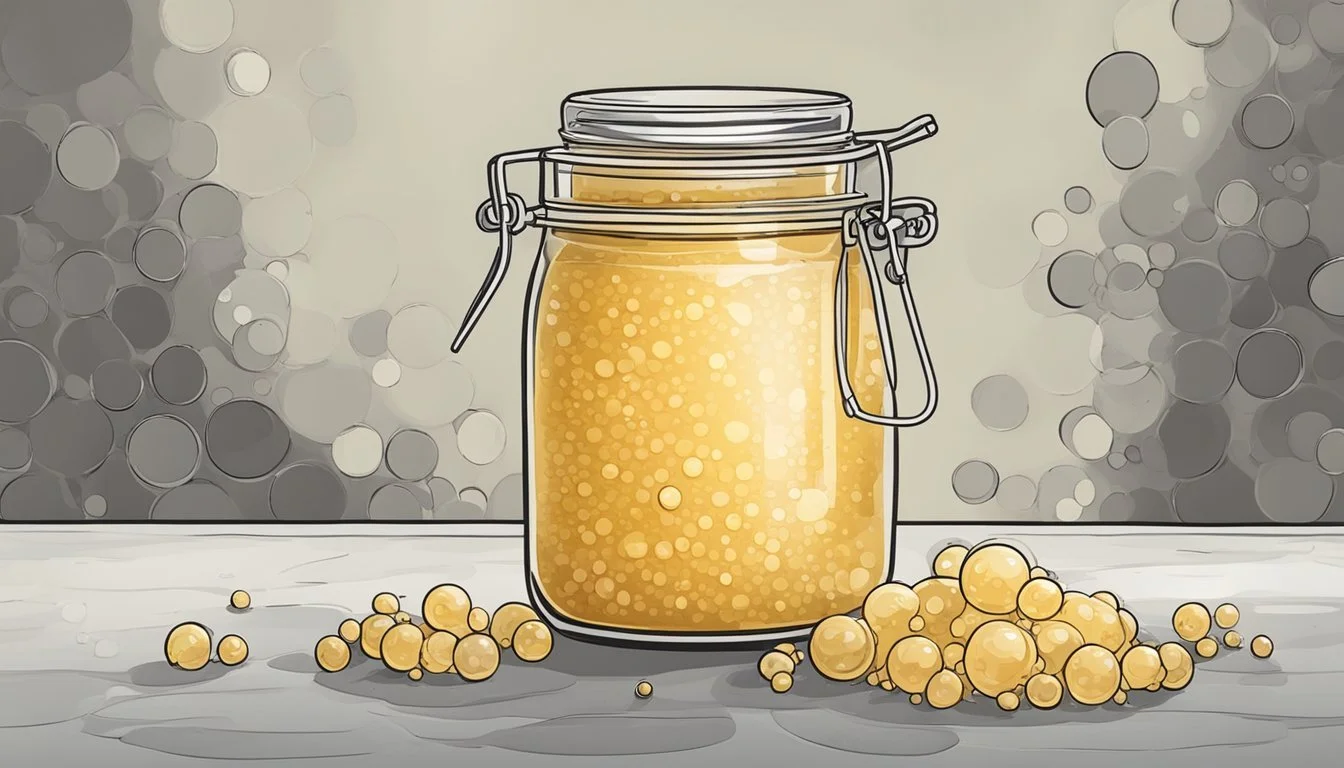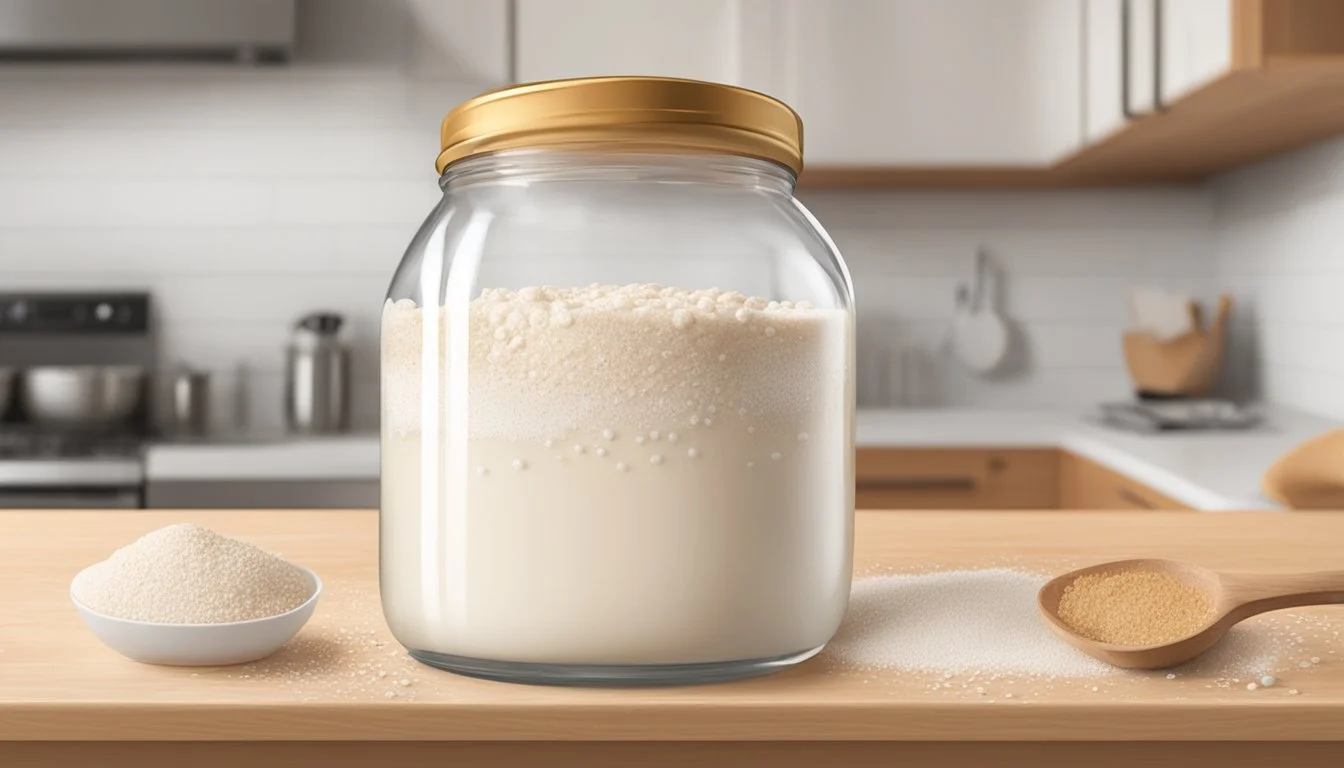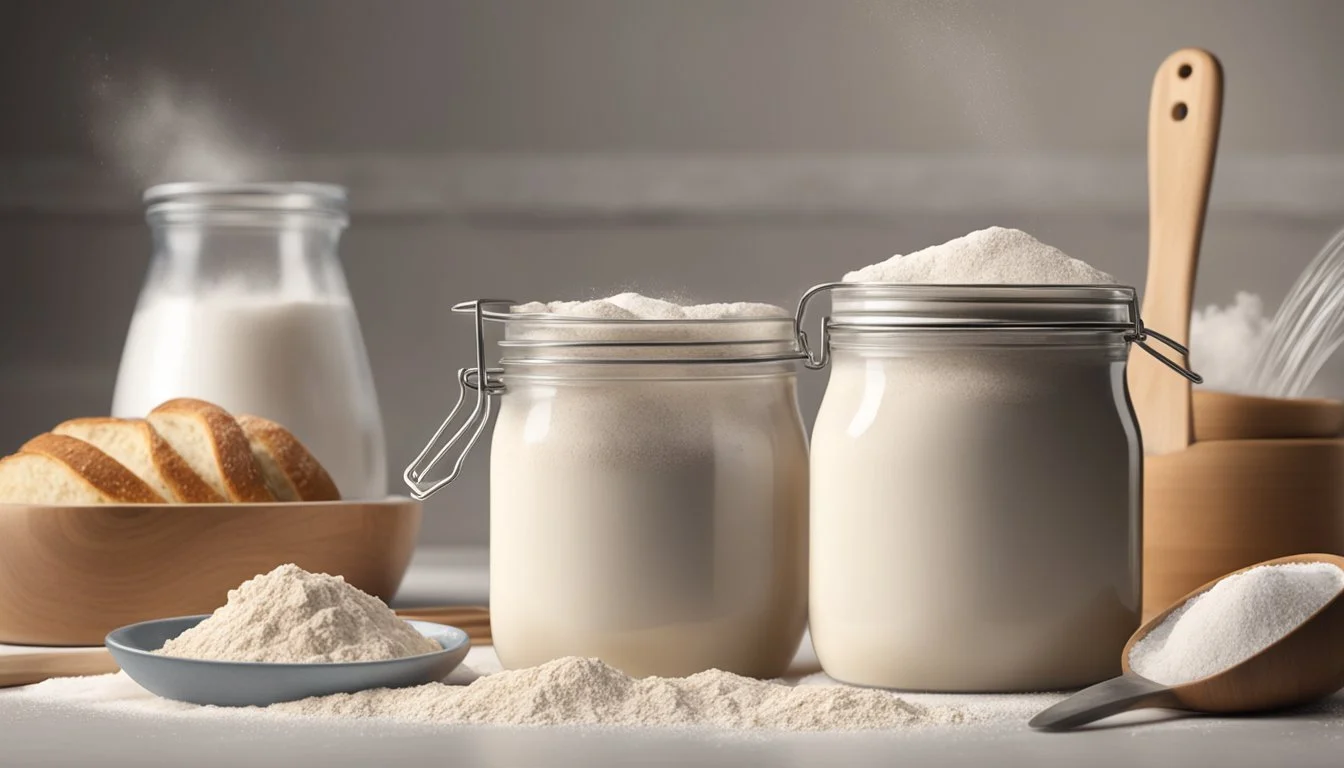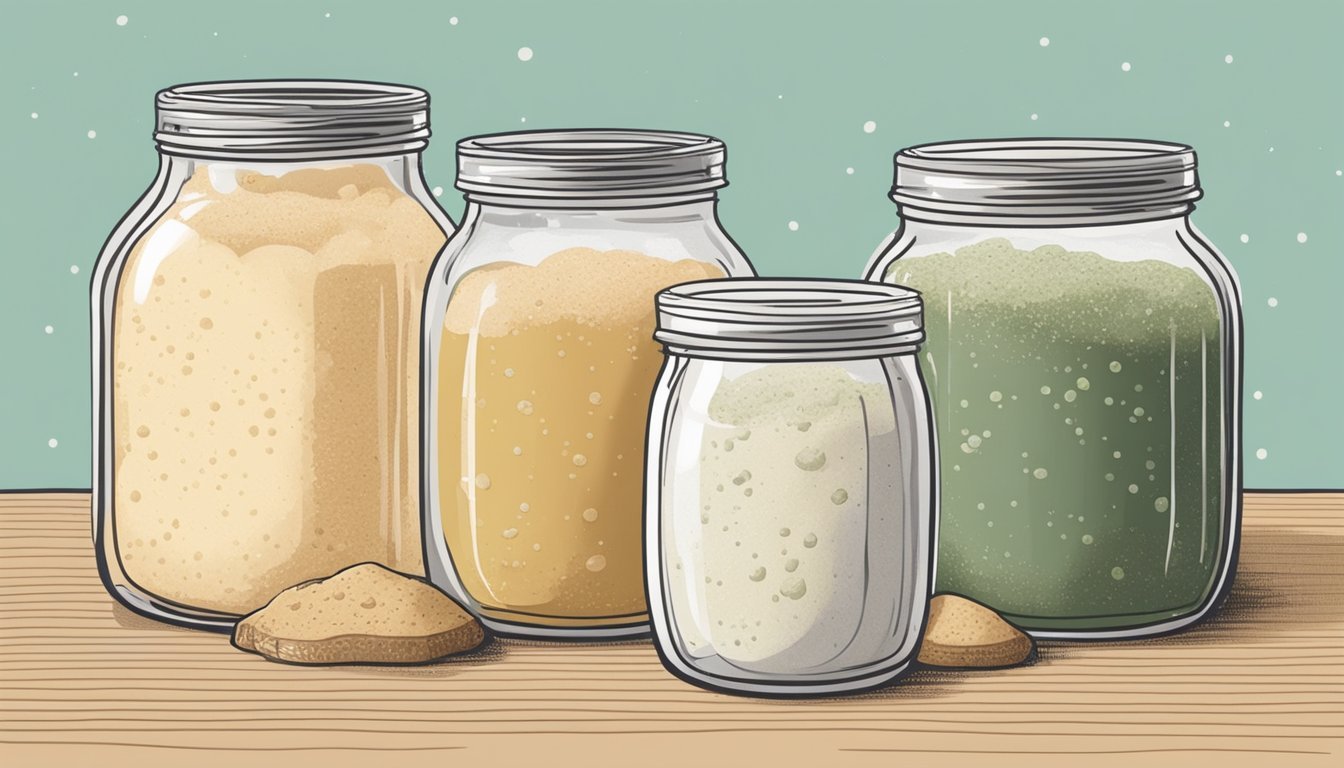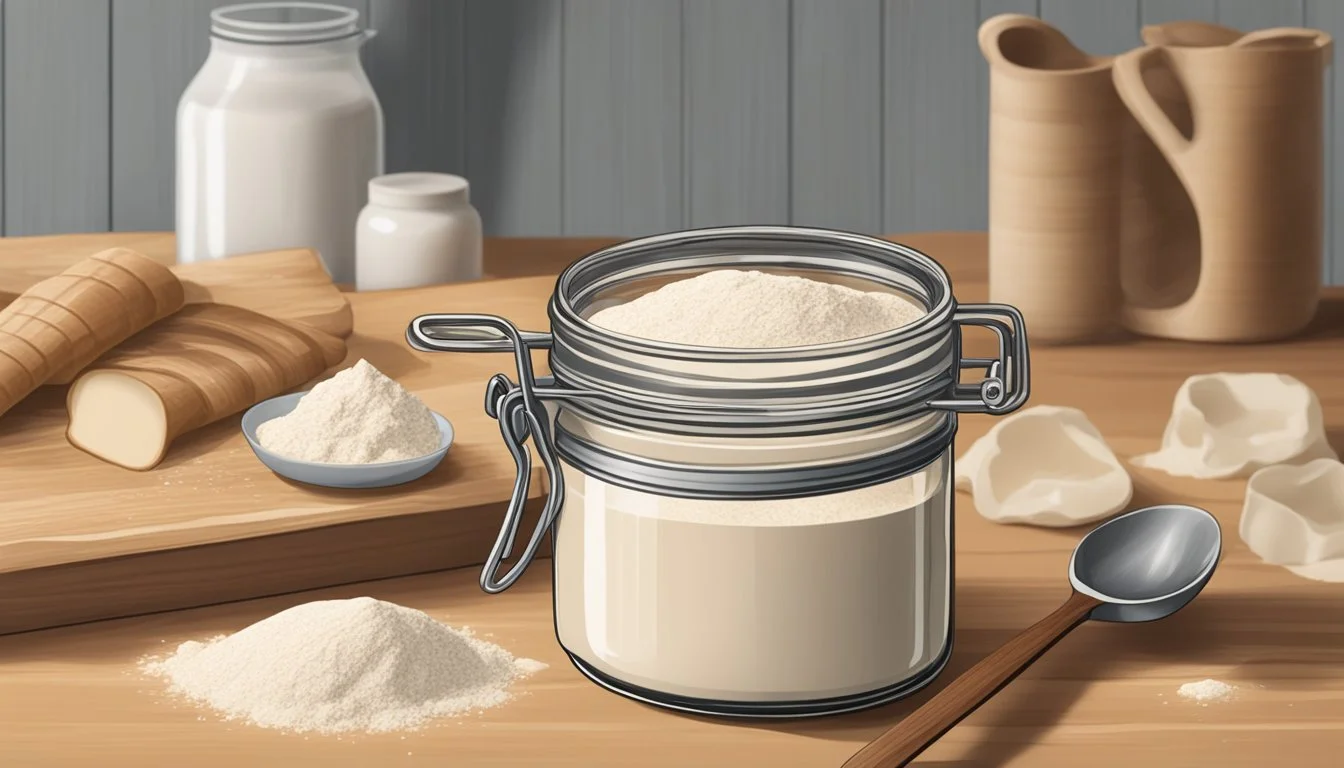Does Sourdough Starter Go Bad?
Signs and Storage Tips
Sourdough baking enthusiasts often wonder if their sourdough starter can spoil. The quick answer is yes, a sourdough starter can go bad. Recognizing when your starter has gone bad is crucial to maintaining a healthy and active culture. Signs of a failing starter include unpleasant odors, mold, and unusual color changes like pink or orange streaks.
A healthy sourdough starter smells slightly tangy or musty, akin to cheese or yogurt. The aroma is unique but not offensive unless you’re particularly sensitive to strong smells. When the starter isn’t properly maintained, harmful bacteria can outgrow the beneficial yeast and bacteria, leading to spoilage.
Temperature also plays a vital role in the health of your sourdough starter. Keeping it too cold can slow down fermentation, making the starter sluggish and less active. Conversely, a warmer environment encourages yeast growth, ensuring your starter remains bubbly and ready for baking.
Basics of Sourdough Starter
A sourdough starter is a live culture of flour and water that harnesses wild yeast and bacteria from the environment. It is crucial for creating the rise and flavor unique to sourdough bread.
Composition and Function
A sourdough starter consists mainly of flour and water. Wild yeast naturally present on flour and in the air populates the mixture, along with beneficial bacteria such as Lactobacillus. This combination creates the unique tangy flavor and leavening properties of sourdough.
Feeding is essential to maintain the starter. Regularly adding fresh flour and water keeps the yeast and bacteria active and healthy. The typical ratio for feeding is equal parts water and flour by weight.
The wild yeast ferments the sugars in flour, producing carbon dioxide that leavens the bread. Meanwhile, the bacteria produce lactic acid, contributing to the sour flavor.
Optimal Environmental Conditions
The environment plays a crucial role in the success of a sourdough starter. Temperature is especially important. For optimal fermentation, a starter should be kept between 23-26°C (73-79°F).
Lower temperatures, such as those around 70°F (21°C), can slow down the fermentation process, making the starter sluggish. Conversely, temperatures above 110°F can kill the yeast and bacteria.
When not in use, it’s common to store the starter in the refrigerator. However, while preparing for baking, it should be kept at room temperature. Placing it in a warm, draft-free spot, such as inside a kitchen cabinet, ensures consistent activity.
Maintaining these conditions ensures a healthy, active starter ready for baking.
Maintaining Your Sourdough Starter
Regular feeding is essential to keep your sourdough starter healthy and active. Recognizing signs of hunger and troubleshooting common issues can prevent your starter from going bad.
Regular Feedings
A sourdough starter needs consistent feedings to stay active. At room temperature, it should be fed every 12-24 hours.
Feeding Process:
Stir: Mix the starter thoroughly.
Discard: Remove about half of the starter.
Add Ingredients: Incorporate equal parts flour and lukewarm water.
Mix: Stir until smooth.
For starters stored in the fridge, feed approximately once a week. Measure equal parts of water and flour by weight, usually 100 grams each.
Regular feedings ensure the starter remains robust and ready for baking.
Signs of a Hungry Starter
A neglected starter shows clear signs of needing a feed. One indication is the formation of a hooch, a dark liquid on top.
Key Signs:
Sour or foul smell (sharper than usual)
Little to no rise
Watery texture
Feeding times may need adjustment based on these signals. A healthy starter should have a pleasant, tangy smell and a bubbly appearance.
Troubleshooting Common Issues
Several common issues can arise with sourdough starters, particularly with temperature and feeding intervals.
Common Problems and Solutions:
Slow Fermentation: Keep the starter warm (ideally above 70°F/21°C) to boost activity.
Foul Smell: Discard more of the starter and refresh with fresh flour and water.
Lack of Rise: Increase feeding frequency or adjust the storage temperature.
Recognizing these problems early helps maintain a healthy and active starter. Proper troubleshooting ensures a reliable outcome for your sourdough baking endeavors.
Identifying Problems with Your Sourdough Starter
A sourdough starter can exhibit various signs indicating it has gone bad. These signs can include unpleasant smells, mold growth, and changes in texture and color.
Recognizing Bad Smells
When a sourdough starter has gone bad, it often emits a foul smell. A healthy starter typically smells tangy and slightly musty, similar to cheese or yogurt. If the smell becomes putrid, like rotting matter or very strong alcohol, this can be a sign of severe neglect or contamination.
A starter with a layer of liquid on top, often referred to as "hooch," may smell alcoholic, but this is usually normal and can be mixed back in. However, an unpleasant, overly sour or sharp odor indicates that the starter is likely spoiled and should be discarded to avoid any health risks.
Visible Signs of Mold
The presence of visible mold on a sourdough starter is a clear indicator that it has gone bad. Mold can appear as fuzzy spots, often colored green, black, or white. More severe cases can show orange or pink tints or streaks.
Even a small amount of mold suggests contamination that can easily spread. As a best practice, any starter with visible mold should be thrown out immediately. Mold is a common sourdough starter problem and indicates the presence of intruders like unwanted bacteria or fungi. Starting fresh is key to maintaining a safe and healthy sourdough environment.
Changes in Texture and Color
Changes in the texture and color of a sourdough starter can also signal problems. A healthy starter usually has a consistent texture that can range from thick to quite liquid, depending on its hydration level. If it becomes unusually thin, watery, or excessively thick and pasty, it may indicate fermentation issues.
Discoloration, such as turning grayish or spotting orange or pink, points to potential spoilage or bacterial infection. These changes are particularly alarming if accompanied by an off smell or mold signs. Regular feeding and proper temperature maintenance can help prevent these issues and maintain a thriving and active starter.
In summary, recognizing bad smells, visible signs of mold, and changes in texture and color are crucial in identifying problems with your sourdough starter. Frequent monitoring and appropriate care ensure the starter remains healthy and productive.
Reviving a Neglected Sourdough Starter
When sourdough starter is neglected, it may seem beyond saving, but with attention and correct steps, it can often be revived. This section will guide you through determining the extent of neglect and effectively reviving your starter.
Determining the Extent of Neglect
To revive a neglected sourdough starter, first assess its condition. If the starter has formed a layer of liquid on top, called "hooch," it indicates fermentation has slowed. Stirring this back in is a good start.
Check for mold or unusual colors. Mold typically signals a need to discard the starter. Meanwhile, it should smell tangy or yeasty—off odors like putrid or chemically usually mean it's too far gone.
Bubbles are also crucial. If it's still producing bubbles, active fermentation is present, showing some resilience. No bubbles might mean it's dormant but not necessarily dead.
Steps to Revive Your Starter
Follow a consistent feeding schedule to bring life back to the starter. Start by discarding about half of the starter.
Once discarded, feed the remaining starter with equal parts flour and water (for instance, 50g of each). Ensure the water is lukewarm to promote fermentation.
Mix thoroughly and store the starter in a clean jar, marking the height to monitor growth. Leave it at room temperature, ideally around 70°F, to encourage activity.
Repeat the feeding process every 12 hours. Eventually, it should develop more bubbles and rise consistently within 8-12 hours, signaling revitalized fermentation and health.
If activity seems slow, consider slightly adjusting the feeding ratio and ensuring the starter remains in a warm environment. Be patient, as full recovery can take several days.
Using and Storing Sourdough Starter
Sourdough starter is a versatile ingredient that can be used in various recipes. Proper storage is crucial to maintain its health and longevity.
Incorporating Starter into Recipes
Incorporating sourdough starter into recipes requires understanding its role in baking. A mature starter is active and ready for baking when it has a bubbly texture and a pleasant, slightly tangy aroma. Common recipes include sourdough bread, pancakes, and waffles.
For sourdough bread, typically two cups of starter are mixed with flour, water, and salt. Be mindful of using the right type of flour, such as whole wheat or rye, depending on the desired flavor profile. Discarded starter, or sourdough discard, can be used creatively in non-bread recipes, such as crackers or pizza dough.
Storage Solutions for Sourdough Starter
Proper storage of sourdough starter is essential to keep it alive and active. Store the starter in a clean jar with a loose lid to allow gas to escape. For daily use, keep it at room temperature and feed it with equal parts of flour and water.
To extend the time between feedings, refrigerate the starter. It can typically survive up to a week without feeding in the fridge. For long-term storage, the starter can be frozen. Place the starter in a freezer-safe container and label it with the date. When ready to use, thaw it in the fridge and refresh it with fresh flour and water before baking.
Understanding the Science of Sourdough
Sourdough's unique characteristics come from the interplay of yeast and lactic acid bacteria that co-exist in the starter. These microorganisms drive fermentation, resulting in the sour flavor and leavening properties of the dough.
The Role of Yeast and Bacteria
Yeast and lactic acid bacteria are the primary microorganisms in a sourdough starter. Natural yeast ferments the sugars present in the flour, producing carbon dioxide gas and alcohol. These bubbles of gas cause the dough to rise.
Lactic acid bacteria, on the other hand, produce lactic acid and acetic acid. This results in the characteristic sour flavor of sourdough. The ideal ratio of yeast to bacteria is crucial; too much yeast can overshadow the sourness produced by the bacteria.
Fermentation and Its Effects
Fermentation plays a key role in sourdough preparation. During this process, the yeast and bacteria break down the carbohydrates in the flour, releasing gases and acids.
Heat influences fermentation. Warmer conditions accelerate yeast activity, increasing gas production and causing the dough to rise faster. Conversely, cooler conditions slow down the process.
Fermentation also impacts the dough's texture and flavor. The acids produced by bacteria create a mildly tangy taste, while the bubbles from yeast improve the dough's structure. Further, the production of alcohol during fermentation contributes subtle flavors to the final bread. Careful management of these factors ensures a balanced and flavorful sourdough bread.
Sourdough Starter in Different Conditions
Sourdough starter responds to various conditions in distinct ways, affecting its health and consistency. Key factors include climate variations, the type of containers used, and the choice of flour, particularly for gluten-free options.
Adjusting to Climate Variations
Temperature plays a crucial role in the activity and maintenance of a sourdough starter. In a warm environment, such as above 75°F (24°C), fermentation happens quickly, which can be beneficial but also requires more frequent feeding. Conversely, in cooler climates below 70°F (21°C), the starter ferments more slowly. This slow fermentation might cause sluggish rising and delayed progress in activity.
Maintaining a consistent temperature around 70-75°F (21-24°C) by using a warm spot in your home or a proofing box can help in achieving proper fermentation. Adjust feeding schedules based on these temperature variations to ensure the starter remains active and healthy.
Dealing with Reactive Metals
It's essential to consider the type of container used for maintaining a sourdough starter. Reactive metals like copper and aluminum can negatively impact the starter due to their tendency to react with the acidic environment, potentially leading to off-flavors and discoloration. This can hinder the growth of beneficial bacteria and yeast.
Stainless steel is generally considered safe and non-reactive. Using glass, ceramic, or food-grade plastic containers can also ensure the integrity of the starter. Avoiding reactive metals promotes a healthy, uncontaminated fermentation process.
Gluten-Free and Alternative Flour Starters
Sourdough starters can be made with various flours including rye, white flour, whole wheat, and gluten-free alternatives. Each type of flour affects the starter's consistency and flavor differently. Rye flour tends to produce a robust, slightly tangy flavor, while white and whole wheat flours offer milder tastes.
Creating a gluten-free starter involves using flours like brown rice, sorghum, or buckwheat. These require careful adjustments in hydration and feeding frequencies because they behave differently compared to gluten-containing flours. Consistency can vary; thus, monitoring and adjusting the water-to-flour ratio is vital to maintaining a bubbly, active starter.
Using a mix of flours or experimenting with different types can yield unique flavors and textures in baked goods. Ensure regular and appropriate feeding to keep the gluten-free and alternative flour starters vibrant and effective.
Advanced Sourdough Techniques
Achieving mastery in sourdough baking involves cultivating a mature starter and experimenting with various flavors and textures. Key aspects include consistent feeding and using different types of flour to influence the starter's aroma and activity.
Cultivating a Mature Starter
A mature sourdough starter, rich in both yeast and bacteria, is essential for producing high-quality sourdough bread. Keeping the starter at warm temperatures (above 70°F or 21°C) helps maintain its activity.
A regular feeding schedule is crucial. Feed the starter with equal parts water and flour, such as wholemeal or strong rye, to provide it with necessary nutrients. Ensure that the starter is bubbly and has a tangy aroma, much like yogurt or cheese, indicating healthy fermentation.
Pro Tip: If the starter becomes sluggish, remove half and refresh it with fresh flour and water until active again.
Experimenting with Flavors and Textures
Different types of flours and additives can alter the taste and texture of your sourdough bread. Wholemeal or rye flour can enhance the tangy flavor and produce a more robust aroma.
Introduce additives like seeds, herbs, or even dried fruits to create unique textures and flavors. Adjust feeding times based on the fermenting properties of these ingredients to maintain the starter’s health.
Flavor Enhancements:
Seeds: Add crunch and nutty flavors.
Herbs: Impart aromatic and savory notes.
Dried Fruits: Provide sweetness and chewy texture.
Experimenting with these variables allows bakers to craft distinctive sourdough bread with unique flavor profiles.
Sourdough Starter Health and Safety
Maintaining the health and safety of a sourdough starter is crucial for successful baking and preventing any potential health risks. Key considerations include preventing contamination and recognizing spoilage signs.
Preventing Contamination
To prevent contamination, cleanliness is vital. Use a clean spoon and sanitized jars to avoid introducing bad bacteria or mold. Ensure hands and work surfaces are clean before handling the starter.
Keep the starter covered to prevent fruit flies and other contaminants from settling in. If a musty smell or visible mold appears, it’s safest to discard the starter.
Timing also plays a role in health. Feed the starter regularly to keep it active, as neglected starters can develop harmful bacteria.
Finally, drying a portion of the starter is a good safety measure. If the starter goes bad, the dried backup can be rehydrated to start anew. Regular monitoring and proper sanitation practices are essential for a healthy sourdough starter.

